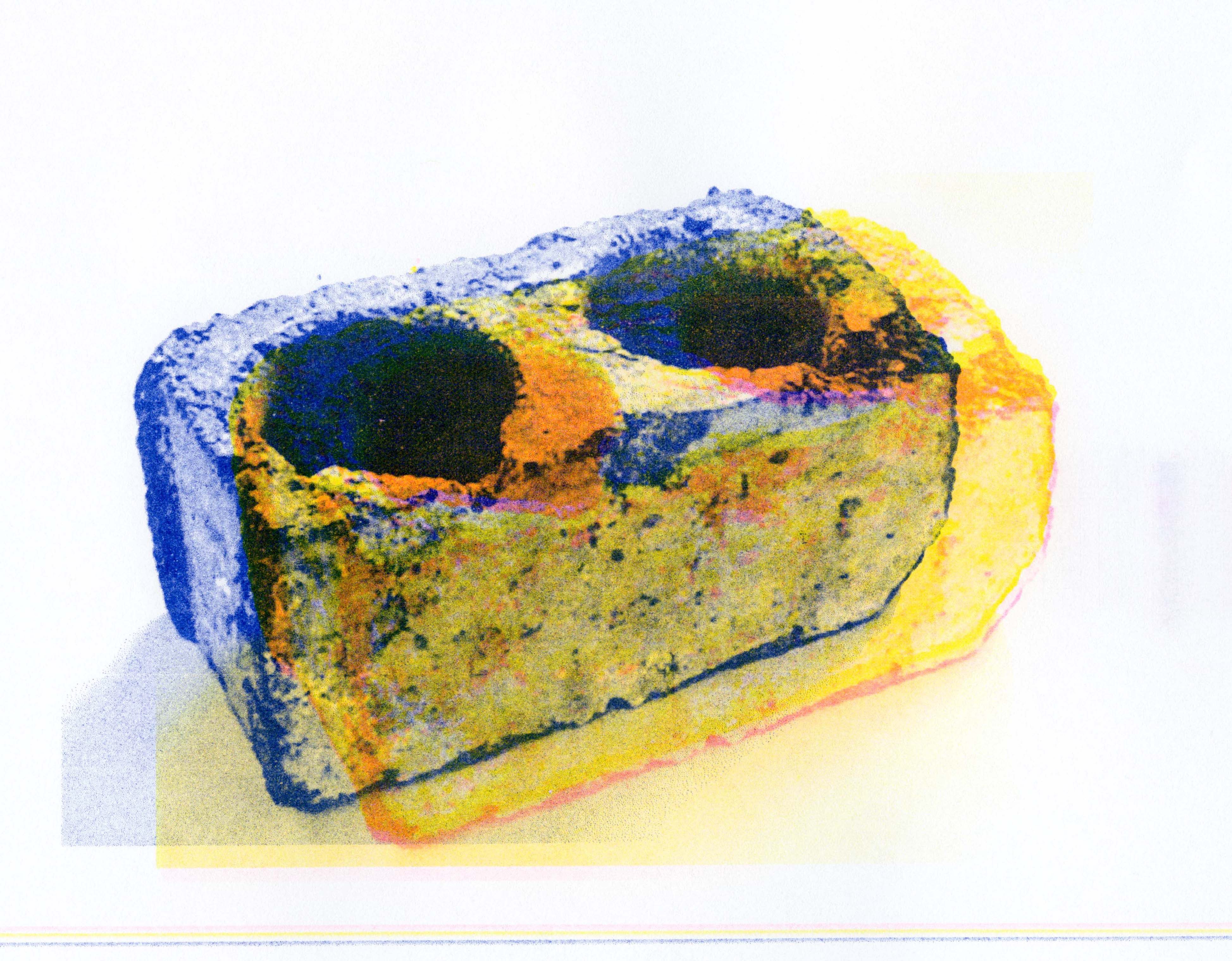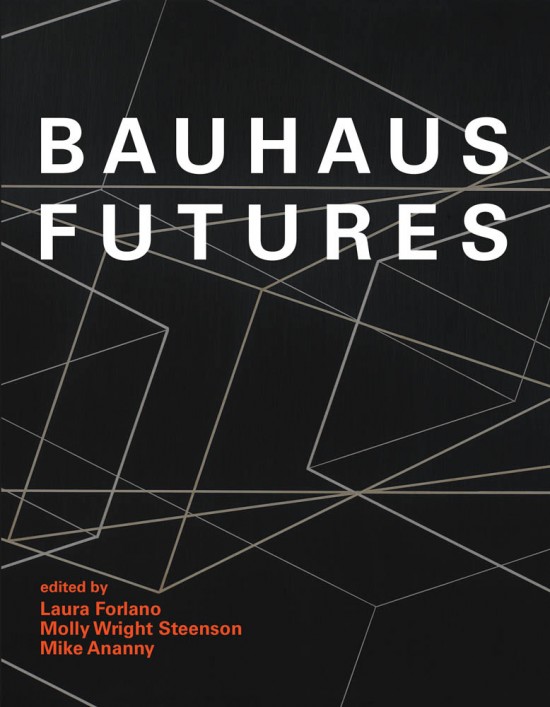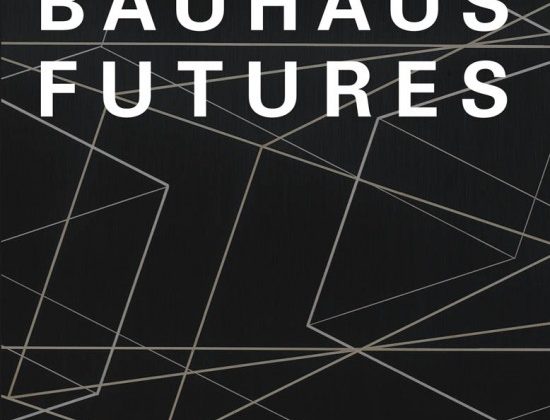New publication: “Anarchival Materiality: the Bauhaus Building in Dessau”

Risograph image remediating a Hollow cinder block. Adapted from Conservation and Preservation of the Bauhaus Building in Dessau by Monika Markgraf. Trudi Lynn Smith and Kate Hennessy 2018.
Trudi Lynn Smith and I are honored to present our risograph print remediations of buildings and materials from the Bauhaus campus in Dessau in a chapter “Anarchival Materiality: The Bauhaus Building in Dessau” that we co-authored with Oliver Neumann. Bauhaus Futures (MIT Press 2019) is edited by Laura Forlano, Molly Wright Steenson, and Mike Ananny.
Anarchival Materiality: The Bauhaus Building in Dessau
Trudi Lynn Smith, Kate Hennessy, and Oliver Neumann
Abstract
In this essay we present a series of images remediating photographs related to the Bauhaus building in Dessau, and of photographer Lucia Moholy. Moholy’s photographs of the building, which were later used by Walter Gropius to promote the Bauhaus design narrative (Schuldenfrei 2013), are implicated here as iconic yet precarious residents of the Bauhaus archive. Like the Dessau building itself, which has been repeatedly subject to destructive political and environmental forces, we explore these early photographs as examples of what we call anarchival materiality, or the generative force of entropy in archives. The anarchival force of molecular transformation, violence, displacement, and other human and non-human interactions render archival materials as fugitives, both eluding and driving preservation (Hennessy and Smith, 2018).
As a condition of all things, fugitivity foregrounds precarity over longevity, and dynamism over stasis. To this end, our photo-essay experiments with the logics, migrations and imperfection of layering colour dyes, which emerged as visual technologies concurrent with the establishment (and exile) of the Bauhaus in Weimar Germany. Color film and photographs––once imagined as realistic representations of actualities––have not stood the test of time, with fugitive colors today transforming the archival past into magenta hues. Similarly, the Dessau building, envisioned by Walter Gropius as a manifesto of the Bauhaus idea, exists as an entropic material archive that is as precarious as it is iconic. Our images represent fugitivity of the Dessau building as 1) the product of historically situated social relations and gendered dynamics of power and representation 2) inevitable material transformation (eg. environmental and wartime deterioration); and 3) changing regimes of value (materials and functions shifting across time). How does viewing the Dessau building through the lens of anarchival materiality suggest an alternative reading of Bauhaus history and future? How might fugitives within archival structures reveal potentials in entropy?

Bauhaus Futures
Edited by Laura Forlano, Molly Wright Steenson and Mike Ananny
Bauhaus Futures (MIT Press 2019)
Essays, photo-essays, interviews, manifestos, diagrams, and a play explore the varied legacies, influences, and futures of the Bauhaus.
What would keep the Bauhaus up at night if it were practicing today? A century after its founding by Walter Gropius in Weimar, Germany, as an “experimental laboratory of the future,” who are the pioneering experimentalists who reinscribe or resist Bauhaus traditions? This book explores the varied legacies, influences, and futures of the Bauhaus.
Many of the animating issues of the Bauhaus—its integration of research, teaching, and practice; its experimentation with materials; its democratization of design; its open-minded, heterogeneous approach to ideas, theories, methods, and styles—remain relevant. The contributors to Bauhaus Futures address these but go further, considering issues that design has largely ignored for the last hundred years: gender, race, ethnicity, class, sexuality, and disability. Their contributions take the form of essays, photo-essays, interviews, manifestos, diagrams, and even a play. They discuss, among other things, the Bauhaus curriculum and its contemporary offshoots; Bauhaus legacies at the MIT Media Lab, Black Mountain College, and elsewhere; the conflict between the Bauhaus ideal of humanist universalism and current approaches to design concerned with race and justice; designed objects, from the iconic to the precarious; textile and weaving work by women in the Bauhaus and the present day; and design and technology.
Contributors Alice Arnold, Jeffrey Bardzell, Shaowen Bardzell, Karen Kornblum Berntsen, Marshall Brown, Stuart Candy, Jessica Charlesworth, Elizabeth J. Chin, Taeyoon Choi, B. Coleman, Carl DiSalvo, Michael J. Golec, Kate Hennessy, Matthew Hockenberry, Joi Ito, Denisa Kera, N. Adriana Knouf, Silvia Lindtner, Shannon Mattern, Ramia Mazé, V. Mitch McEwen, Oliver Neumann, Paul Pangaro, Tim Parsons, Nassim Parvin, Joanne Pouzenc, Luiza Prado de O. Martin, Daniela K. Rosner, Natalie Saltiel, Trudi Lynn Smith, Carol Strohecker, Alex Taylor, Martin Thaler, Fred Turner, Andre Uhl, Jeff Watson, Robert Wiesenberger

